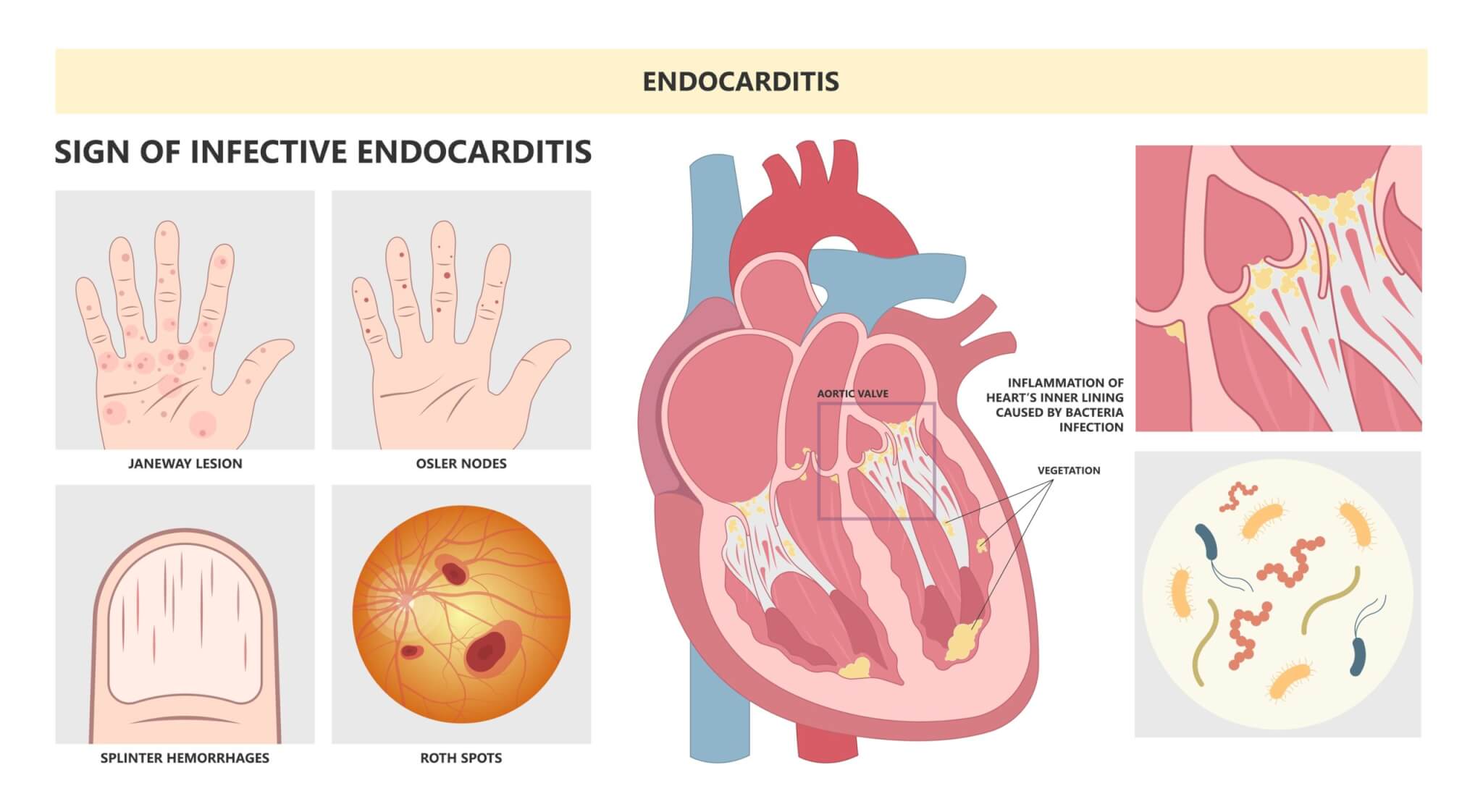Researchers warn that opioid epidemic is fueling lethal cases of infective endocarditis in younger adults.
DALLAS — A troubling trend in Americans’ heart health is emerging, and doctors are aiming to bring more awareness to the problem. While death rates from infective endocarditis have generally declined across the U.S. over the past two decades, they have alarmingly increased among young adults aged 25 to 44. This research, published in the Journal of the American Heart Association, underscores a public health issue that intersects with the ongoing opioid crisis.
Infective endocarditis, often referred to as bacterial endocarditis, is a rare but serious condition where bacteria enter the bloodstream and infect the heart lining, valves, or blood vessels. It poses a higher risk to individuals with heart valve abnormalities, previous valve surgeries, artificial valves, congenital heart defects, or a history of the disease. If left untreated, it can lead to severe complications, including heart failure and life-threatening infections. Alarmingly, it can also be a complication arising from the injection of illicit drugs.
Infective Endocarditis Death Rates By Age
The study was conducted Dr. Sudarshan Balla, an associate professor of medicine at the West Virginia University Heart and Vascular Institute. He points out the concerning rise in death rates among young adults, speculating a strong link to the opioid crisis affecting several states. “Our study findings raise a public health concern, especially since the deaths in younger age groups are on the rise,” he says in a statement. “We speculate that this acceleration was likely, in the most part, due to the opioid crisis that has engulfed several states and involved principally younger adults.”

The study utilized the Centers for Disease Control and Prevention’s Multiple Cause of Death dataset to analyze national trends and disparities across different demographics from 1999 to 2020. Despite the decline in infective endocarditis death rates overall in the U.S., the data shows a 5% average annual increase in death rates among young adults aged 25-34, and more than 2% for the 35-44 age group.
Stagnant rates were seen in the 45-54 age group, while a decline was seen in adults over 55.
Additionally, the study analyzed state-level trends in death rates, providing insights into regional variations. This approach allowed the researchers to uncover the disproportionate impact of infective endocarditis in certain states and among specific age groups, linking these trends to broader public health issues like the opioid crisis.
Kentucky, Tennessee, and West Virginia exhibited a particularly pronounced increase in death rates due to infective endocarditis. These states, heavily impacted by the opioid epidemic, have seen an increase in injection drug use–related infective endocarditis cases.
The Opioid Crisis Connection
Study results indicate a potential connection between the increase in infective endocarditis deaths among young adults and the opioid epidemic. Substance use disorder, often associated with opioid abuse, emerged as a significant factor in the study, particularly in the states most affected.
The findings of this study are a wake-up call, emphasizing the need for targeted public health interventions, especially in states heavily affected by the opioid crisis. Dr. Balla stresses the need for comprehensive care plans that include screening and treatment for substance use disorder for those treated for infective endocarditis. He also highlights the ongoing efforts in some states to implement harm reduction programs aimed at mitigating the risks associated with intravenous drug use, such as the spread of infectious diseases.
The researchers acknowledge certain limitations due to the reliance on death certificate data, which can sometimes contain inaccuracies. They emphasize the need for further investigation to fully understand the reasons behind these trends among young adults and in specific states.
How To Prevent Infective Endocarditis
Preventing infective endocarditis involves good hygiene, managing existing conditions, and following specific precautions for at-risk procedures. Here are some key tips:
Oral hygiene:
- Maintain excellent oral health: Brush twice daily, floss regularly, and schedule dental checkups every six months. This reduces bacteria in your mouth, minimizing the risk of it entering your bloodstream through gum disease or tooth abscesses.
- Treat dental infections promptly: Address gingivitis, cavities, and other dental issues quickly to prevent bacteria from entering your bloodstream.
General hygiene:
- Practice good handwashing: Wash your hands frequently with soap and water, especially before and after medical procedures, caring for wounds, or touching your face. This helps prevent bacteria from spreading.
- Take care of your skin: Treat cuts, scrapes, and wounds promptly to prevent infection. If you have a chronic skin condition, manage it effectively to lower the risk of bacteria entering your bloodstream.
Managing existing conditions:
- Control heart valve problems: If you have existing heart valve issues, regular monitoring and timely treatment are crucial. Address leaky valves or valve replacements as needed to minimize the risk of bacteria attaching to them.
- Treat ongoing infections: Manage any current infections diligently with antibiotics and follow your doctor’s advice to control the spread of bacteria.
Precautions for at-risk procedures:
- Follow antibiotic prophylaxis guidelines: If you have certain heart conditions, your doctor may recommend taking antibiotics before specific procedures like dental work, urinary tract surgery, or certain respiratory procedures. This helps prevent bacteria from entering your bloodstream during the procedure.
- Talk to your doctor before having piercings or tattoos: If you have a heart condition, discuss piercings or tattoos with your doctor beforehand, as these procedures can introduce bacteria into your bloodstream.
And of course, maintaining good general health goes a long way. Eating a balanced diet, exercising regularly, and getting enough sleep all contribute to a strong immune system, which can help fight off infections. Be cautious about activities that increase your risk of skin or mucous membrane tears, such as sharing needles or using certain types of body-piercing jewelry. As this study shows, substance use certainly can play a key role in the condition.
Remember, while these tips can help prevent infective endocarditis, they are not guaranteed to eliminate the risk entirely. If you experience any symptoms of infective endocarditis, such as fever, chills, fatigue, new heart murmur, or unexplained skin changes, seek immediate medical attention.
It’s important to note that these are general tips, and the specific recommendations for preventing infective endocarditis may vary depending on your individual risk factors and medical history. Always consult your doctor for personalized advice on how to best protect yourself from this serious condition.

So many paranoid people just parrot “vaccine dun it” to anything that goes wrong. A little reading comprehension however would show this study data was from 1999 to 2020, before Covid and BEFORE the vaccine existed!
But please, don’t let me stop you spreading your ill-informed Qanon Kool-aid-drinking whacko conspiracy propaganda that parrots the internet with zero evidence, just like the claims the election was stolen.
Zero evidence and a whole lot of brainwashed sheep. Sounds like your typical cult to me.
Yes and: https://twitter.com/DowdEdward/status/1744480021635551318?t=GUPxLiiSOUvtrXUL5Dq2xg&s=19
It’s like a breath of fresh air reading these comments. More and more folks are stepping up to the truth. Wonder when the “scientists” who produce bogus studies such as this one will catch on that we know they’re a poor-quality clown show? Wonder when they’ll catch on that with every ridiculous piece of “research” such as this, people lose even more trust in science, scientists, medicine, and doctors? Good luck continuing to mine your fortunes, clowns, when no one is reading or listening to a word you say anymore.
💉💉💉💉💉💉💉💉
Laughable that they’re selling this new lie, covering for the corporate / government cabal pushing billions and billions of taxpayer paid vax’s on the world.
Well, at least European nations are acting on this fraud and suing the pants off of those culpable.
Really opoid use ? Amazing that Big Brother Biden can get newspaper articles changed (wink, wink) to fit their slanted agenda. Any fool who believes that all of USA is on vicodin to cause all these h
cardiac arrests is crazy. U have never before have young americans dying of heart attacks in these numbers that have taken the covid vaccines as well, nothing to see here folks.
Do you not understand that endocarditis and cardiac arrest are not even related diagnoses? Maybe understand the simple definition of a diagnosis before you demonstrate your profound fund of knowledge. Pure idiocy.
Read more closely. This is looking at data up to 2020. Pre Vaccine.
All liberals should be required to get the vaxx… gene pool will even itself out.
Was there any cross referencing data showing how many of these excess deaths were people that had actually uses drugs?
Any data to indicate if the dead had been vaccinated?
Vaccines
…brought to you by…Pfizer.
Young soldiers & elite athletes falling over dead and being reduced to 100% disability has nothing to do with opioid use.
It’s a fact that many were forced to be Guinea pigs to take an experimental shot just to continue to be able work.
Endocarditis is not a cardiac arrest, it is an infection. Through your lack of knowledge, you are conflating cardiac arrest, vaccines, and heart disease with an infection of a heart valve. These patients die of heart failure caused by the dysfunction and leakage of the infected valve. The various causes were listed, and have not changed over the last 40 years—-the increase in younger patients just emphasizes the increase in IV opioid use. Unless you feel skin infections and worsening dental hygeine have worsened enough in this age group to account for the increase. As with many of the comments, paranoia, conspiracy theories, and general ignorance combine in troubling ways.
It must really be stressful for the vaccinated to wake up EVERY day and wonder “is today the day?”.
Winter vagina and climate change my newspaper told me was the cause. How could injecting an experimental potion with unknown ingredients cause heart problems?
Mr Twain said “Tis easier to fool people than convince them they were fooled”
its part of the opioid crisis (for even those not on opioids?), no it because of climate change, anything but the fake-vax-death-shots. ANYTHING. Perhaps next it will because of antisemitism too, or because of Russian disinformation…would be funny if so many were not injured and dying.
WV’s AIDS rate went up significantly after state politicians ended the needle exchange program in its capitol county.
Seeing other needle-based infections rise as a result is not surprising – reuse of needles is a simple vector to spread disease.
This is straightforward, and it has nothing to do with the covid vaccine. I’m a forensic pathologist, and I have seen a marked increase in these cases at autopsy. The cause is simple — these are drug addicts who use either dirty needles or who grind up pills and inject the drugs. Both of these actions inject bacteria into the bloodstream. The bacteria get deposited on heart valves because of the turbulence of blood flow in the heart. *Every* case I’ve seen in the past few years has been in an intravenous drug user.
Thank God. An actual reply based in reality. How did you get on here?
This may be the most ill informed and stupidest article I’ve read in a long while. It’s also very dangerous to mislead people in this way. I challenge you to do more in-depth research and analysis.